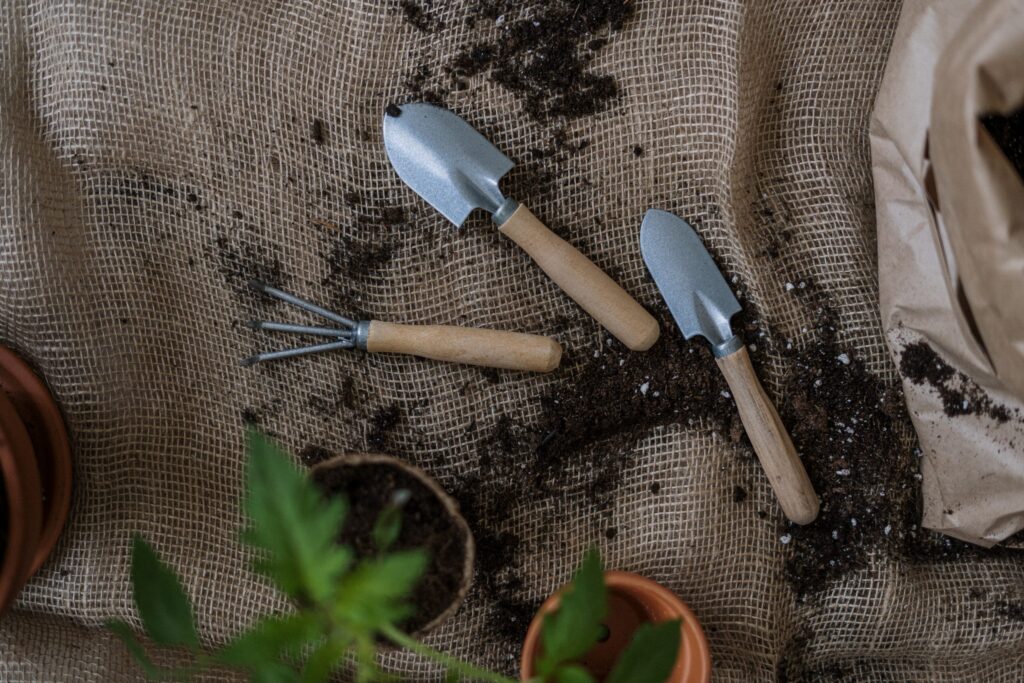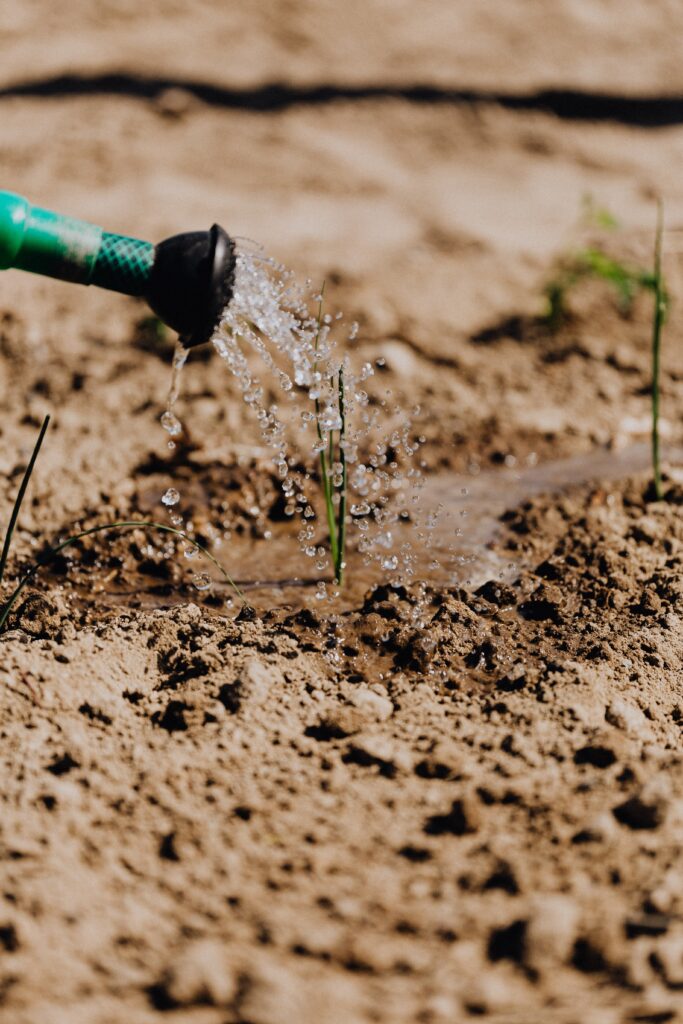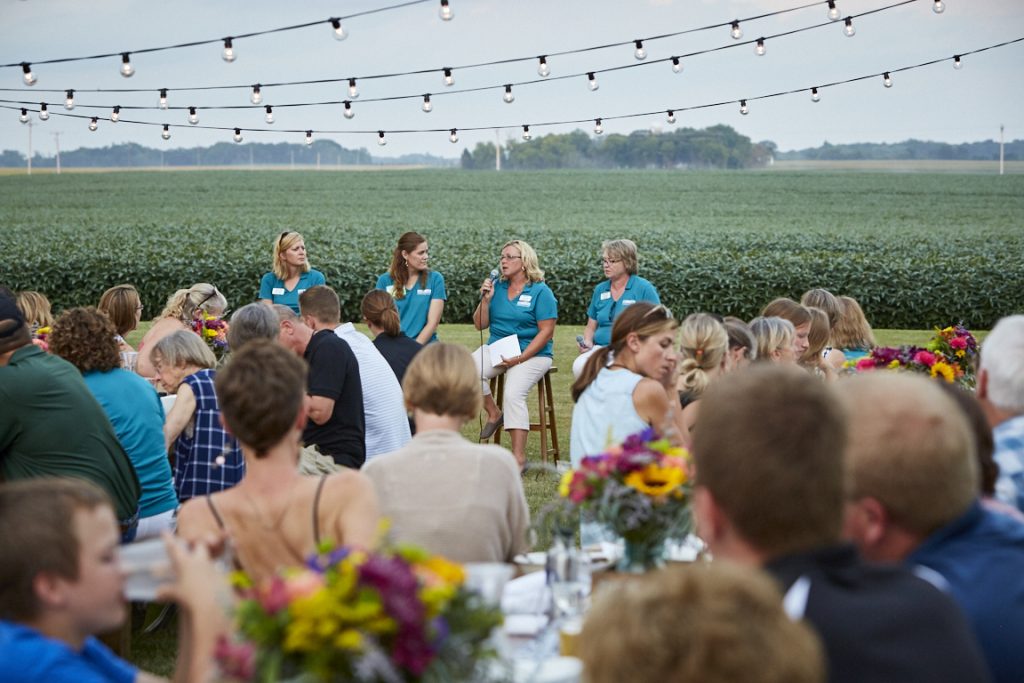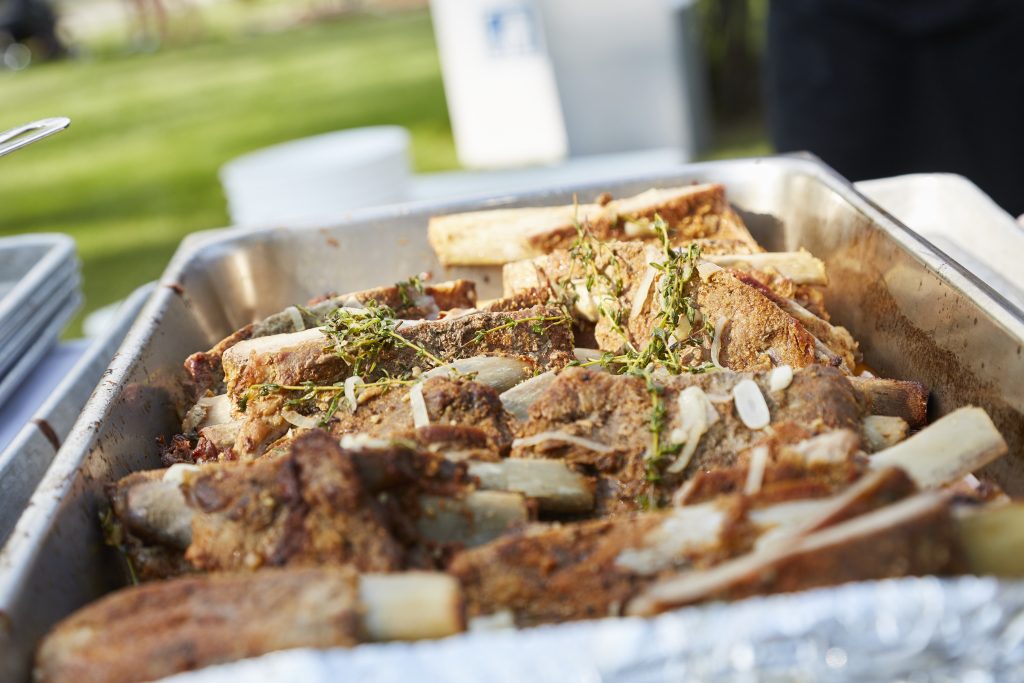Volunteer Insights
Spring Gardening Tips
It’s planting season on our CGMN volunteers’ farms! Our volunteers have been busy prepping their fields, planting their crops, and some are even getting their gardens ready for the summer.
While our farmers are preparing their fields for their crops, many are also cleaning out their flower beds, and fruit & vegetable gardens to make their harvest plentiful all summer long.
Whether you planted your garden during the first “fake” spring in March, or are a late bloomer and are planting in June (summer officially starts on June 21, there’s time), we gathered a few tips & tricks with CGMN volunteers, Ellyn Oelfke and Kristie Swenson, to help you gain a green thumb this season.
Time for a Tool Tune-up
If you’re a seasoned gardener, it’s time to check on how your tools fared in the garage or shed over the winter. Sharpen those pruners, be sure to clean, sand, and oil your wooden handles, and take note of what either needs replacing or what needs to join your gardening tool kit.
If you’re just getting started – welcome! You’re going to need a good pair of gardening gloves, pruning shears, loppers, garden fork, spade, and possibly a rake, and hoe depending on the size of your garden. You may also want to include a nice hand towel for when you get sweaty and covered in dirt, a kneeling pad to protect your knees, and ensure that your watering setup is easily accessible.

Inspect Your Space
It’s time to inspect how your yard or garden changed over the winter. Be sure to take note of damage on plants, beds that need care, what hardscaping items need to be replaced such as fences, benches, sheds, trellises, trim, etc., and whether or not you gained some furry friends. Check to see if you have new burrows from animals like squirrels, rabbits, skunks, or chipmunks.
Evaluate your exposure. Watch the sun progress over your yard and make note of what gets full sun, partial sun, partial shade, or full shade. It is also important to note what part of your yard gets morning or afternoon sun. Knowing what kind of sun your plants will or will not be exposed to is crucial to picking the right ones. Petunias and geraniums thrive in full, hot sun, while impatiens and begonias prefer shade.

Cleanup, Cleanup!
After inspecting what issues need to be addressed, it’s time to get started on fixing those issues! Begin with any hardscaping issues that need to be addressed, as well as if anything additional needs to be built.
Now that you’ve dealt with your hardscaping, it’s time to clean up your garden. Ideally, clean out your beds before the first bulb pops up for the season. Cleanup includes weeding, picking up fallen branches, matted down leaves, last year’s perennial foliage, and any annuals you didn’t remove last fall. Good garden cleanup ensures that you will have a healthy garden throughout the seasons!
Get out your pruning scissors and prune out any broken or damaged from shrubs, bushes, or trees.
Shrubs you CAN prune in spring: butterfly bush, smooth hydrangea (H. arborescens), panicle hydrangea (H. paniculata), potentilla, rose of Sharon, and roses.
Shrubs you CAN NOT prune in the spring: azalea, forsythia, lilac, quince, ninebark, and weigela.
Watch for weeds! Weeds can take over your gardens and flower beds quickly! It’s important to spend time weeding to keep your plants and gardens looking their best. It’s much easier to hoe weeds when they’re small and their roots are small, than to pull weeds when they’re as tall as your plants! If you don’t have a lot of time to spend in the garden, try weeding for 15-20 minutes each day. Or, work in sections – pick an area to weed each day. If you have people to help you, delegate tasks or sections to your helpers. Weeds keep popping up, so you’ll want to stay on top of weeds all summer long.

Don’t Soil Yourself
Soil is arguably the most crucial part of gardening (just like it’s crucial to our CGMN farmers as they begin planting this spring, too). It’s important to test your soil every couple of years to ensure that your garden is getting its key nutrients.
After you know what soil you need, it’s important to feed it! Whether you choose to compost, use manure or fertilizer, it’s good to feed your garden so that it better feeds you.

Planted with Love
If needed, spring is the perfect time to transplant any plants that have either grown too large for the space they currently occupy, or you can spread the love of that plant to other spots of your garden!
Before planting, be sure to put out any necessary stabilizing devices like trellises or stakes to help support your plants’ growth.
It’s time to plant! Plan out your garden with spring plants such as pansies, nemesia, and osteospermum daisies, sweet alyssum, lobelia and Supertunia petunias. These are all cool-weather plants and will survive any unexpected cold nights (yes, those still happen even in May)!
Assess your variety – how much space do you have to fill? A creeping plant variety is great for covering a large surface, but edges may require a smaller plant up front while adding height in the background can provide dimension. Keep in mind that beautiful blooms aren’t the only thing to consider, too. Choosing vegetable plants that flower provides a pop of color before vegetables ripen, while fragrant herbs display beautiful greenery that you can later snip and toss in a food dish or cocktail!
Keep in mind that different flower varieties bloom at different times throughout the seasons. Some are always blooming (like petunias or superbells), while some only last a few short weeks (peonies or lilacs, sigh). Even though they leave behind beautiful greenery, you’ll want to pick a variety of blooms that flower throughout spring, summer, and fall for you to enjoy! If you want to add an extra pop of colors, try going with hanging baskets!
We’ve found that vining plants like to climb up as well as out. We use a metal panel from an old corn crib that allows our cucumber plants to climb up, instead of vining out on the ground. It makes picking cucumbers so much easier! We can see the cukes and pluck them easier than when they spread on the ground. We have short metal trellises for our peas, and it makes them easier to pick, too! You can use vegetable supports, trellises, or any type of metal that has a grid pattern. Just keep in mind that you’ll want to support the panel with stakes for heavier produce, like cucumbers.

.
Follow CommonGround Minnesota on Facebook and Instagram.




